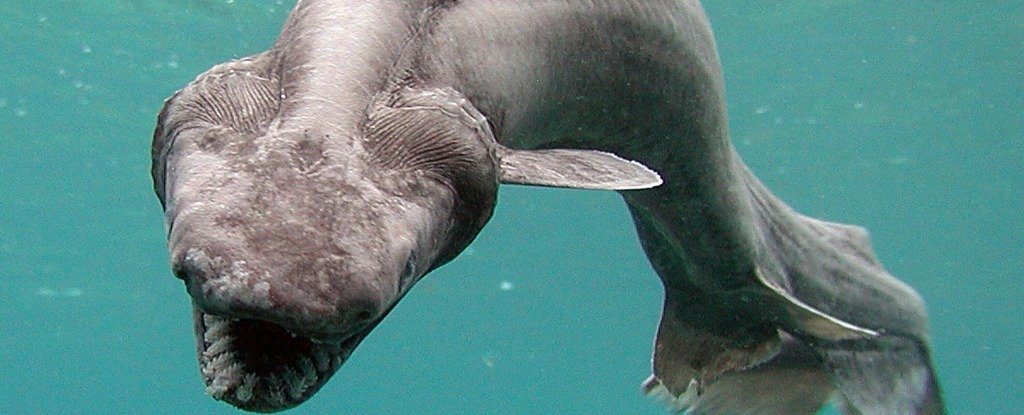
Scientists uncover a horrifying and nightmare shark with more than 300 teeth
The ocean covers around 70% of the Earth’s crust. There are thousands of species living in the lakes, rivers, seas, and oceans. Even after discovering thousands of aquatic species, we have still uncovered 5% of the total ocean which means more than 95% of the oceans remain unexplored. This is pretty unsettling because there are a plethora of species of animals and aquatic beings into the depth of the oceans which haven’t discovered yet. One such nightmarish looking species is of frilled fish. It is a prehistoric dinosaur-era shark with insanely arranged teeth that have been found swimming around the coast of Portugal.
According to the reports, this is a serpentine conglomerate of a deadly looking shark which is touted as the oldest and the creepiest living species on the face of the Earth. It is, however, a question on how these species survived for so long even after their contemporaries died a long ago during the Cretaceous period. The discovery of such a nightmare shark started when a group of scientists hailing from the European Union visited the Atlantic Ocean in November 2017 to scan through the depth of the ocean. Their goal was to minimize the unwanted catches in commercial fishing but instead, they came upon something very unsettling.
According to the scientists, they encountered the rarest creature on the planet which has been around since the breakup of the Pangea millions of years ago. The fish was named as frilled fish due to its fluffy and frilly edges with a stature of six feet tall. What’s unsettling is within its short-snouted head which has more than 300 teeth arranged in 25 rows that make up for a pretty dangerous looking fish in the middle of the Atlantic Ocean.
It uses its array of teeth to eat fishes, sharks, squids, and octopuses. According to the reports, humans have known about the frilled shark for a long time now. It lives in the depth of the ocean and has seldom made any contact with any human for the last 80 million years or so. It has basic anatomy, however, the biggest question is how this species survived for such a long period after their contemporaries died during the end of Cretaceous period.
Researchers have found staggering beings when they set out on the quest to find these undiscovered species in the depth of the oceans. For instance, back in 2017, Australian museums funded an international team of scientists who captured some creatures from the depth of the ocean i.e. two miles beneath the ocean. The researchers wanted to analyze how these species can live in such a perpetual darkness at the depth of the ocean where the pressure is extremely high and the temperature and living conditions are inhospitable. They discovered few species such as a red crab with thorny spikes, a coffinfish, and others.
So, next time when you visit a beach, beware of floating away from the shore as you don’t really know what species might harbor the region. Though there were some instances when beaches saw these never-seen-before creatures such as when hurricane Harvey washed a giant creature with no face in Texas.


